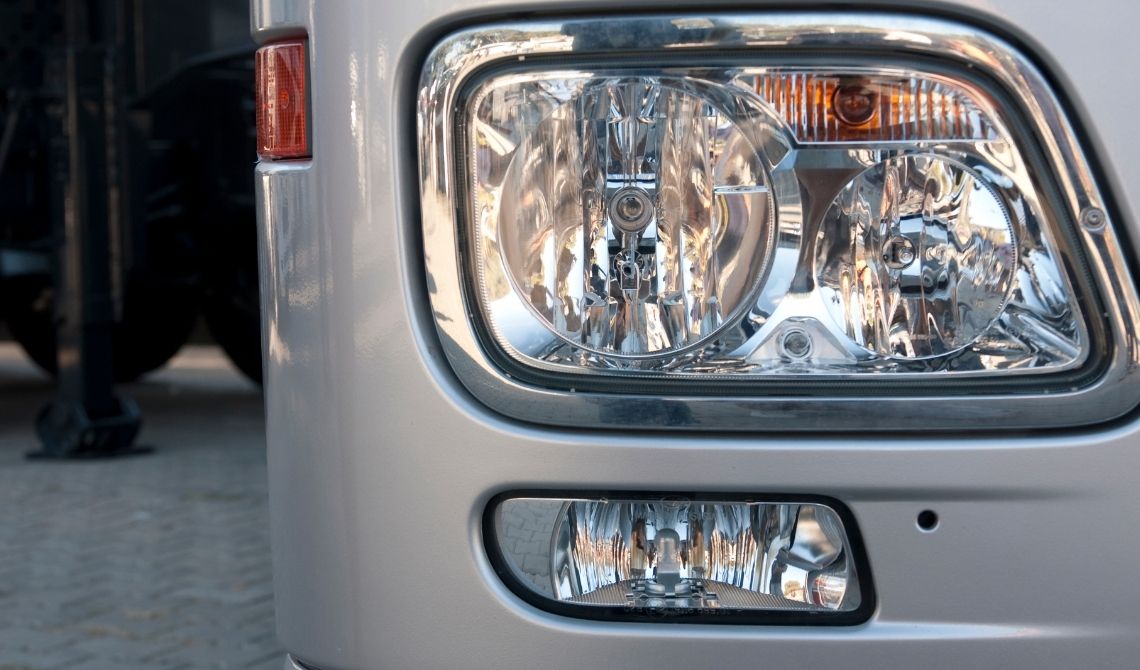Shining Bright: A Comprehensive Guide to Truck Headlights
Understanding the Importance of Truck Headlights
Truck headlights aren’t just accessories; they’re the eyes of your vehicle on the road, guiding you through the darkest of nights and the thickest of fogs. Beyond mere illumination, these headlights are paramount for safety, ensuring visibility to both the driver and other road users. They serve as a crucial aspect of road safety standards, enhancing the overall visibility of the truck and reducing the risk of accidents, particularly during low light conditions.
Moreover, truck headlights contribute significantly to the aesthetics of the vehicle, adding a touch of personality and style. Whether it’s the classic glow of halogen bulbs or the modern brilliance of LED lights, the choice of headlights can greatly impact the appearance of the truck.
Understanding the importance of truck headlights goes beyond mere functionality; it’s about prioritizing safety and ensuring a pleasant driving experience. As we delve deeper into the world of truck headlights in this guide, we’ll explore the various types available, factors to consider when choosing the right headlights for your truck, and essential maintenance tips to keep them shining brightly for miles to come. So, buckle up as we embark on a journey to illuminate the road ahead!
Types of Truck Headlights
Truck headlights come in various types, each with its own set of features, advantages, and drawbacks. Understanding these options is crucial for making an informed decision when upgrading or replacing your truck’s headlights.
-
Halogen Headlights:
These traditional headlights are affordable and widely used in many vehicles. They provide a warm, yellowish light and are relatively easy to replace. However, they are not as bright or energy-efficient as newer alternatives.
- LED Headlights: Light Emitting Diode (LED) headlights are becoming increasingly popular due to their energy efficiency and long lifespan. They produce a bright, white light that enhances visibility and safety on the road. While they may have a higher upfront cost, their durability and low energy consumption make them cost-effective in the long run.
- HID/Xenon Headlights: High-Intensity Discharge (HID) or Xenon headlights produce a bright, bluish-white light that closely resembles natural daylight. They offer excellent visibility and are often found in luxury vehicle models. However, they can be more expensive to replace and may require professional installation.
- Projector Headlights: These headlights feature a projector lens that focuses the light beam, resulting in improved visibility and a more precise light pattern. They are commonly found in newer vehicles and can enhance both the aesthetics and performance of the truck.
- Halo/LED Halo Headlights: These headlights feature a distinctive halo ring or LED accent lighting around the main light source. They add a stylish touch to the truck’s appearance and can increase visibility, especially in low light conditions.
By understanding the different types of truck headlights available, you can choose the option that best suits your preferences, budget, and driving needs.
Factors to Consider When Choosing Truck Headlights
Selecting the right headlights for your truck involves considering several key factors to ensure optimal performance, safety, and compatibility with your vehicle. Here are some important factors to keep in mind:
-
Brightness and Visibility:
One of the primary purposes of headlights is to provide adequate visibility on the road. Consider the brightness level of the headlights, measured in lumens, to ensure sufficient illumination, especially during nighttime driving or in adverse weather conditions.
- Energy Efficiency: Opt for headlights that are energy-efficient to minimize the strain on your vehicle’s electrical system and reduce fuel consumption. LED headlights, in particular, are known for their low energy consumption compared to traditional halogen or HID headlights.
- Durability and Longevity: Choose headlights that are durable and long-lasting to withstand the rigors of daily driving and varying weather conditions. LED headlights typically have a longer lifespan than halogen or HID headlights and are less prone to failure.
- Compatibility: Ensure that the headlights you choose are compatible with your truck’s make and model. Check for any specific requirements or compatibility issues, especially if you’re considering aftermarket headlights or upgrades.
- Ease of Installation: Consider the ease of installation, especially if you plan to install the headlights yourself. Some headlights may require professional installation or modifications to your vehicle, while others are designed for easy plug-and-play installation.
- Regulatory Compliance: Ensure that the headlights comply with local regulations and standards regarding brightness, color, and beam patterns. Non-compliant headlights may not only pose safety risks but could also result in legal issues or fines.
- Cost and Budget: Determine your budget and weigh the cost of the headlights against their features, quality, and longevity. While premium headlights may have a higher upfront cost, they may offer better performance and durability in the long run.
By considering these factors carefully, you can make an informed decision and choose the best headlights for your truck that meet your needs and preferences.
Installation Process and Tips
Installing new headlights on your truck can be a rewarding DIY project, but it’s essential to follow the correct steps to ensure proper installation and optimal performance. Here’s a step-by-step guide along with some useful tips to help you through the process:
-
Gather Necessary Tools:
Before you begin, gather all the tools you’ll need for the installation, including screwdrivers, wrenches, and pliers. Additionally, ensure you have the replacement headlights and any necessary adapters or wiring harnesses.
- Prepare the Vehicle: Park your truck on a level surface and turn off the engine. Activate the parking brake to prevent the vehicle from rolling. If necessary, consult your owner’s manual for specific instructions on accessing the headlights.
- Remove the Old Headlights: Depending on your vehicle model, you may need to remove the grille, bumper, or headlight trim to access the headlight housing. Carefully disconnect the wiring harness from the old headlights and remove any mounting screws or bolts.
- Install the New Headlights: Align the new headlights with the mounting holes and secure them in place using the provided screws or bolts. Ensure that the headlights are properly aligned and seated flush with the vehicle’s body.
- Connect the Wiring Harness: Carefully connect the wiring harness of the new headlights to the corresponding connectors in your vehicle. Double-check the connections to ensure they are secure and properly insulated.
- Test the Headlights: Before reassembling any components, test the new headlights to ensure they are functioning correctly. Turn on the headlights, high beams, and turn signals to verify that all functions are working as intended.
- Adjust Headlight Alignment: Once the headlights are installed, adjust the beam alignment as needed to ensure optimal visibility without blinding oncoming drivers. Use the adjustment screws located on the back of the headlight housing to fine-tune the aim.
- Reassemble the Vehicle: Once you’re satisfied with the installation and alignment, reassemble any components that were removed to access the headlights, such as the grille or bumper. Ensure that all fasteners are tightened securely.
By following these steps and tips, you can successfully install new headlights on your truck and enjoy improved visibility and safety on the road. If you’re unsure about any aspect of the installation process, don’t hesitate to seek professional assistance.
Maintenance and Care for Truck Headlights
Proper maintenance is essential to ensure that your truck headlights remain in optimal condition, providing reliable illumination and enhancing safety on the road. Here are some maintenance tips to help you care for your truck headlights:
-
Regular Cleaning:
Dirt, grime, and insects can accumulate on the surface of your headlights, reducing visibility over time. Clean your headlights regularly using a mild soap and water solution, along with a soft cloth or sponge. Avoid using abrasive cleaners or rough materials that could scratch the lens.
- Polishing: Over time, the plastic lens of your headlights may become cloudy or yellowed due to exposure to UV rays and environmental factors. Use a specialized plastic polish or restoration kit to remove oxidation and restore clarity to the lens. Follow the manufacturer’s instructions carefully for best results.
- Sealing: After polishing your headlights, consider applying a protective sealant or UV-resistant coating to help prevent future damage and maintain clarity. These sealants can provide an additional layer of protection against UV rays, oxidation, and environmental contaminants.
- Inspect for Damage: Regularly inspect your headlights for any signs of damage, such as cracks, moisture buildup, or loose seals. Addressing these issues promptly can prevent further damage and ensure the longevity of your headlights.
- Replace Bulbs: If you notice a decrease in brightness or one of your headlights has stopped working, it may be time to replace the bulbs. Refer to your vehicle’s owner’s manual for the correct bulb type and wattage, and follow the manufacturer’s instructions for proper replacement.
- Check Alignment: Periodically check the alignment of your headlights to ensure that they are properly aimed and providing optimal visibility without blinding other drivers. Adjust the aim if necessary using the adjustment screws located on the back of the headlight housing.
By following these maintenance tips, you can keep your truck headlights in top condition, ensuring clear visibility and safety on the road for you and other drivers. Regular care and attention to your headlights will help extend their lifespan and maintain optimal performance for years to come.
Upgrading to LED Headlights: Pros and Cons
Considering an upgrade to LED headlights for your truck? LED technology offers several benefits, but it’s essential to weigh the pros and cons before making the switch. Here’s what you need to know:
Pros:
- Brightness: LED headlights produce a bright, white light that closely resembles natural daylight, providing excellent visibility on the road. They illuminate the surroundings more effectively than traditional halogen bulbs, enhancing safety during nighttime driving.
- Energy Efficiency: LED headlights are significantly more energy-efficient than halogen or HID bulbs, consuming less power while producing the same or even brighter light output. This can help reduce strain on your vehicle’s electrical system and improve fuel efficiency.
- Longevity: LED headlights have a much longer lifespan than halogen bulbs, lasting up to 25 times longer on average. This means fewer replacements and less maintenance over time, saving you time and money in the long run.
- Durability: LED headlights are more durable and resistant to shock and vibration compared to fragile filaments found in halogen bulbs. They can withstand harsh road conditions and temperature fluctuations without compromising performance.
- Instant On: Unlike HID bulbs that require a warm-up period to reach full brightness, LED headlights illuminate instantly when turned on. This instant-on feature provides immediate visibility, especially in situations where quick reactions are necessary.
Cons:
- Initial Cost: LED headlights typically have a higher upfront cost compared to traditional halogen bulbs. However, the long-term savings in energy consumption and replacement costs often outweigh the initial investment.
- Compatibility: Some older vehicle models may require additional adapters or modifications to accommodate LED headlights properly. Ensure compatibility with your truck’s electrical system before purchasing LED headlights.
- Heat Management: LED headlights generate heat, which must be effectively managed to prevent overheating and premature failure. Proper ventilation and heat dissipation mechanisms are crucial for maintaining optimal performance and longevity.
- Glare: LED headlights, especially those with high brightness levels, may produce glare that can be distracting or blinding to other drivers on the road. Ensure proper alignment and aim to minimize glare and comply with regulations.
By weighing these pros and cons, you can make an informed decision about upgrading to LED headlights for your truck, considering factors such as performance, longevity, and cost-effectiveness.
Legal Regulations Regarding Truck Headlights
When it comes to truck headlights, it’s essential to adhere to legal regulations to ensure safety and compliance with road traffic laws. Here’s what you need to know about the legal requirements regarding truck headlights:
Brightness and Color:
Most jurisdictions have regulations regarding the brightness and color of headlights. Headlights must be bright enough to provide adequate visibility without causing glare or discomfort to other drivers. Additionally, the color of headlights is often regulated, typically requiring a white or yellowish light.
Alignment and Aim: Proper alignment and aim of headlights are crucial for preventing glare and ensuring optimal visibility on the road. Headlights should be adjusted so that the light beam is directed straight ahead and slightly downward, illuminating the road without blinding oncoming drivers or pedestrians.
Number of Headlights: Many jurisdictions specify the minimum and maximum number of headlights allowed on a vehicle. Trucks may be required to have a certain number of headlights operational at all times, with regulations varying depending on the vehicle’s size and configuration.
Auxiliary Lighting: Some jurisdictions allow the use of auxiliary lighting, such as fog lights or driving lights, to supplement the main headlights. However, there may be restrictions on when and how these lights can be used, such as during inclement weather or off-road driving only.
Modifications and Aftermarket Lights: Modifications to headlights, such as tinting or installing aftermarket lights, may be subject to regulations and restrictions. It’s essential to check local laws and regulations before making any modifications to ensure compliance and avoid fines or penalties.
Inspection and Enforcement: Law enforcement agencies may conduct inspections and enforce regulations regarding truck headlights during routine traffic stops or vehicle inspections. Non-compliance with legal requirements may result in fines, citations, or even vehicle impoundment in severe cases.
Compliance and Safety: Adhering to legal regulations regarding truck headlights is not only a legal requirement but also essential for ensuring safety on the road. Properly maintained and aligned headlights help prevent accidents and ensure visibility in low-light conditions, contributing to overall road safety.
By familiarizing yourself with the legal regulations regarding truck headlights in your jurisdiction, you can ensure compliance and promote safety for yourself and other road users. If you have any doubts or questions about legal requirements, consult local authorities or legal experts for clarification.
Frequently Asked Questions About Truck Headlights
As we near the end of our comprehensive guide to truck headlights, let’s address some common queries that truck owners often have regarding headlights:
How often should I replace my truck headlights?
Headlight lifespan varies depending on factors like bulb type and usage. Generally, halogen bulbs last around 450-1000 hours, while LED bulbs can last up to 25,000 hours. Replace bulbs when they dim or fail to ensure optimal visibility.
Can I install LED headlights in my older truck?
Yes, you can typically install LED headlights in older trucks, but it may require additional adapters or modifications for compatibility. Check the manufacturer’s specifications and consult with a professional if necessary.
How do I adjust the aim of my truck headlights?
Most vehicles have adjustment screws located near the headlight housing. Park your truck on a level surface facing a wall, mark the center of each headlight beam, and adjust the aim using the screws until the beams are aligned properly.
Are aftermarket headlights legal?
Aftermarket headlights are legal as long as they meet regulatory requirements regarding brightness, color, and beam patterns. Ensure that any modifications comply with local laws to avoid legal issues or fines.
What are the benefits of upgrading to LED headlights?
LED headlights offer several benefits, including increased brightness, energy efficiency, longevity, and durability. While they may have a higher upfront cost, they provide long-term savings and improved visibility on the road.
How do I clean foggy or yellowed headlights?
Foggy or yellowed headlights can be cleaned and restored using specialized plastic polishes or restoration kits. Follow the manufacturer’s instructions carefully to remove oxidation and restore clarity to the lens.
Can I use fog lights as headlights?
Fog lights are designed to supplement headlights in low-visibility conditions but should not be used as primary headlights. Check local regulations regarding the use of fog lights to ensure compliance with road traffic laws.
Are there any safety tips for driving at night with truck headlights?
Ensure that your headlights are clean, properly aligned, and in good working condition before driving at night. Reduce speed, increase following distance, and remain alert for hazards to compensate for reduced visibility.
By addressing these frequently asked questions, we aim to provide clarity and guidance to truck owners navigating the world of headlights. If you have any additional questions or concerns, don’t hesitate to seek further assistance from experts or professionals in the field.
For detailed information, you can contact us at Truck Headlights.


